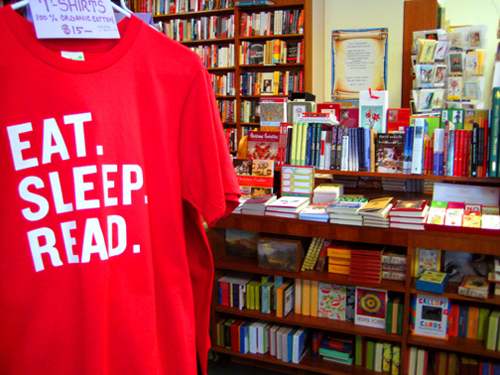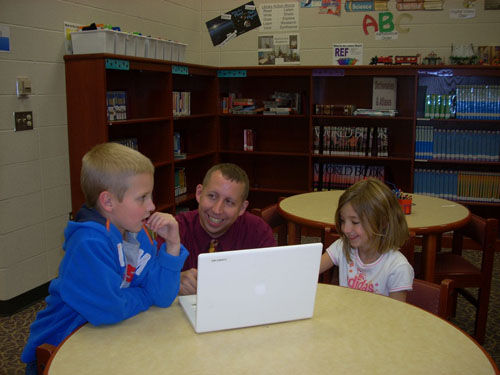
Hay muchas más maneras de leer material de noticias en estos días, Gracias a la Internet. El Internet hace noticia fácil de conseguir, requiere nada más que un clic del ratón o el toque de su dedo. El Internet nos da muchos más lugares para conseguir nuestras noticias, si esa es la versión en línea de nuestro periódico favorito, nuestro blog favorito, or one of many social media outlets. The Internet also allows us to focus in more depth on the news that really matters to us and simply ignore all the news that doesn’t. Desde 2008, more people have gotten their news from the Internet than from newspapers, and the latter continue to decline.
So what does this mean for the future of those printed newspapers that keep piling up on the kitchen table or being thrown out often unopened? And if the adults are reading less of the printed versions, what will the younger generations be doing in the not too distant future?
If you are creative and innovative enough, you can re-invent any business in decline, derecho? Even the struggling business of printed newspapers? The creators of America’s bestselling curriculum-based product, cerebro de Quest, are proving that when it comes to kids and even their parents — sí, you can.
Using the funds made in America from cerebro de Quest ventas (the phenomenon celebrates its 20th anniversary this year with 36 million copies in print), Play Bac launched Mi diario, the first daily newspaper for kids, en 1995. Le Petit Quotidien y L’Actu followed in 1998. The three dailies currently have about 150,000 subscribers and 2 million readers in France.
Editor-in-chief and co-founder of Play Bac, Francois Dufour, recently chatted with me about his follow-up to cerebro de Quest and why he believes there is a future for printed dailies for kids.
What do you believe is so unique about your proposition for kids?
We have no competition in France. Le Petit Quotidien (7 years and up), Mi diario (10-14 años), y L’Actu (14 and up) are the only daily papers available for kids aged 7 a 17, 6 days a week. Our concept is about getting kids to read for at least 10 minutes a day. In terms of our uniqueness? How about 99 percent of our readers keep all the issues. And how about 1 father out of 2 y 2 moms out of 3 also read our newspapers for kids.

Why do you think kids enjoy them so much?
Kids love them because the content is not adult news explained to kids! It is news a nine or 12 o 15 year-old is interested in. Rara vez nos presentamos un artículo en el mismo día de su publicación en las noticias de adultos. Una excepción fue el día bin Laden fue asesinado. También, Creo que los niños les gusta el hecho de que nuestros trabajos son cortos (siete y cincuenta y seis páginas de largo). Nuestros papeles también son muy visuales. Finalmente, el periodismo en nuestros periódicos es grave. No es infantil.
Paper newspapers in this country are experiencing declines in their audiences. Can you give some examples of the kind of strong content you believe is attracting your audience?
I do a monthly survey of each newspaper with a panel of 200 readers. We’ve discovered that the youngest readers like to read incredible animal stories in the news. The next age level of readers likes to be surprised by news. An example of this is news that reveals new records, new discoveries, or new inventions. Our oldest readers like news about injustice, such as stories about the death penalty or DNA mistakes. And all readers like “parlez-moi de moi” cuentos, meaning stories about my daily life at school or at home where I (the reader) can identify with someone in the news.

Are you intending to launch your newspapers for children on the Internet in the near future?
Ante todo, we will stay on paper because our audience really prefers to read on paper. Please note I said our audience prefers to “read” on paper not “communicate.” Segundo, parents want their children to stay away from the Internet for at least 10 minutes a day. Parents don’t ask kids to read our newspapers. Parents just subscribe to them. The paper then arrives with the postman every morning. Parents would not pay for another Internet activity!
How do you see the evolution of the newspaper market in France and Europe for printed children’s newspapers, online news, and downloads to eReaders over the next 3 a 5 años?
I do believe the revenues will continue to grow on tablets and eReaders. Our newspapers have been downloadable for a year already. But right now we only have 150 readers per day per app.
What opportunities are you pursuing internationally and what are your results to date?
We have licensees in English in Hong Kong and we are now expanding in Asia. We are also published in Arabic in Qatar. We’ll be expanding soon to other parts of the Middle East. We also do a weekly “best-of” in French in a Swiss Sunday paper, and in English in an Indian newspaper.
What viable role do you believe printed newspapers can play in the spectrum of media providing news information in the next twenty years?
I believe some older people will continue to read on paper (a luxury). A 49 años (before getting old!), I have given up paper for the iPad. When everybody has a tablet, I do not see a use for paper. Sin embargo, the viable role is still the editor. People can choose to build their own news sources for instance on Twitter. But nothing replaces a good editor, y yo añadiría, un buen editor visual, creating the news for the reader so that it makes enjoyable and interesting reading.

Photos courtesy of Play Bac.
¿Cómo vamos a Leer? Página de la comunidad
Para más ¿Cómo vamos a Leer? artículos: haga clic aquí
C. M. Rubin es el autor de la serie en línea leído, “La Búsqueda Global para la Educación,” y es también el autor de tres libros más vendidos, Incluido “The Real Alicia en el país de las maravillas.”





Comentarios recientes